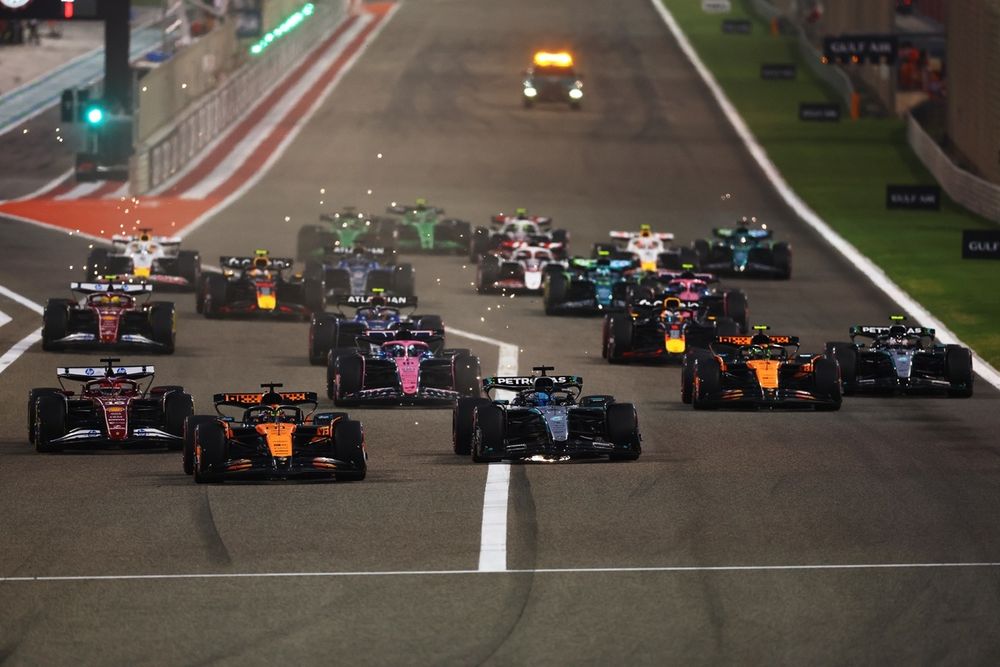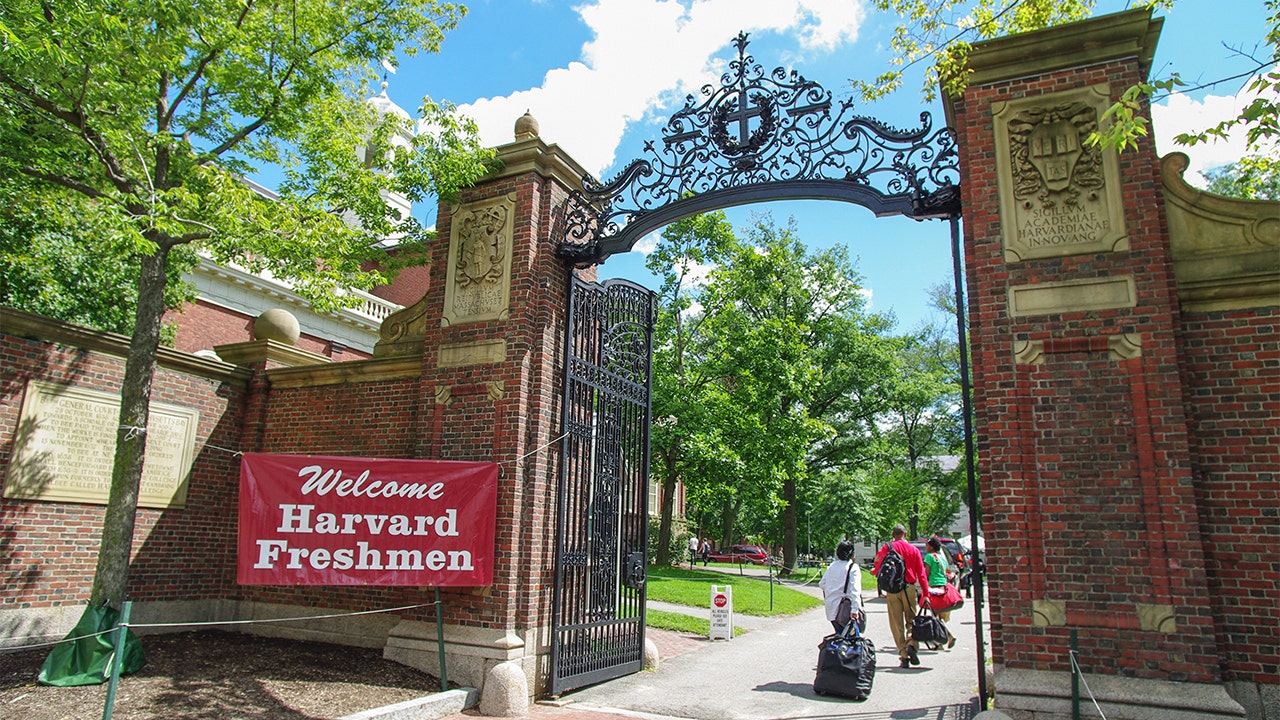If we had to make a guess, what would be Ferrari’s assessment of the Bahrain GP? Charles Leclerc explained it this weekend, much like he did in Suzuka: "Obviously it’s disappointing when you give everything and finish fourth — it doesn’t make me smile. But for now, this is the situation we’re in. We did our best this weekend, but our best isn’t enough."
These are the words of a driver who had different hopes and expectations going into the start of the season, who’s now facing a reality in which the Scuderia still has yet to carve out its place among the pack. Fourth and fifth place are no doubt a disappointment. Not so much in terms of points, but because of the missed podium. To date, the Prancing Horse still hasn't scored a single race podium — just Lewis Hamilton's Sprint win.
With that in mind, coming back to Bahrain, one question remains: How much did the Safety Car cost Ferrari when it came out just past the halfway point, at a stage when Leclerc seemed to be fully in the fight for a top-3 finish? According to Ferrari's team principal Frederic Vasseur, it came out at the worst possible moment.

Charles Leclerc, Ferrari, Lando Norris, McLaren, Oscar Piastri, McLaren, George Russell, Mercedes
Foto di: Mark Thompson - Getty Images
Ferrari's medium compound tyre strategy
Ferrari went into Bahrain with a completely different strategy compared to its rivals, starting on the medium tyre — even at the cost of losing Leclerc's second place just after the start of the race (who might have opted for softs at the start). It's true that track position isn’t as crucial in Bahrain as it is at other circuits, but choosing an alternative strategy, especially when starting at the front, always comes with risks — particularly if you end up stuck in traffic.
For Ferrari, starting on the medium would offer a bit of strategic flexibility, allowing them to adapt based on how the race unfolded. On the other hand, it would allow them to switch to the softs for the final stint when the car would be lighter and put less stress on the tyre to offer more grip — which was particularly important since the SF-25 tends to show signs of wear late in the race.
Another option was on the table — one Leclerc mentioned over the radio at some point during the race. A one-stop strategy that even Pirelli had considered. But this plan was more of a long shot, as conditions would need to align perfectly for the hard tyre to work efficiently, and for Bahrain was slow to get working at all.
As the race played out, Ferrari stuck to its original plan of two stints on the medium — a softer compound than the year prior providing more performance and durability — with a stint on the soft tire, still giving them an upper hand over teams like Mercedes.

Charles Leclerc, Ferrari
Foto di: Clive Mason/Getty Images
But the medium tyre strategy wasn't much of an advantage over Mercedes. Leclerc immediately lost two positions at the start, slipping to fourth behind both George Russell, realistically his main rival for the podium, and Lando Norris, who in theory should’ve had an easy time climbing back up the field given the competitiveness of the MCL39 — if not for several mistakes that ended up having a much bigger impact on his day.
In reaction, Ferrari extended its first stint, creating a 4-lap offset to Russell and a 7-lap gap to Norris. For the McLaren driver, the choice was almost forced: it was clear he was losing time behind Russell and also had to serve a five-second penalty for a starting infraction.
At that point, the seven-lap offset to Leclerc began to make a difference, allowing the Monegasque to close the gap rather quickly. And this is where the race started to get interesting from a strategy standpoint. Looking at the start times of the second stint, the different strategies in play become immediately clear.
The fork in the Ferrari strategy
Having two sets of medium tyres at his disposal, Leclerc immediately pushed to clock a series of fast laps. To give a full sense of how fast compared to his rivals, an example, on his first full timed lap in the second stint, Leclerc was running about a second quicker than Russell.
| Lap | Leclerc (Time) | Russell (Time) | Difference |
| 15 | 37,828 | ||
| 16 | 38,067 | ||
| 17 | 38,193 | ||
| 18 | 38,383 | ||
| 19 | 36,876 | 38,162 | 1,286 |
| 20 | 37,206 | 38,148 | 0,942 |
| 21 | 37,393 | 37,841 | 0,448 |
| 22 | 37,363 | 37,806 | 0,443 |
| 23 | 37,666 | 38,018 | 0,352 |
| 24 | 38,013 | 37,784 | -0,229 |
| 25 | 37,452 | 38,076 | 0,624 |
| 26 | 37,476 | 38,045 | 0,569 |
| 27 | 37,947 | 37,929 | -0,018 |
| 28 | 38,105 | 37,996 | -0,109 |
| 29 | 37,781 | 37,777 | -0,004 |
| 30 | 37,619 | 37,653 | 0,034 |
| 31 | 38,048 | 38,084 | 0,036 |
The Mercedes driver was well aware that without a second set of medium tyres he had only two alternatives: either switch to the hard compound or manage his pace in order to attempt a second stint on softs at the end — matching Ferrari’s strategy. This wasn’t such an unlikely scenario — Mercedes had run the same scenario last year, although the track was a few degrees cooler back then.
But that's why Russell's laps were paced cautiously from the start. And if you closely examine the lap times, you’ll notice he maintained a consistent pace as the tyres degraded — a clear sign that he was managing from the beginning. This theory is also confirmed by the telemetry data, showing that Russell was managing tyre wear both in the fast sections (like Turns 6/7 or Turn 12) and during traction phases out of slower corners, delaying throttle application and putting more stress on the front tyres than the rears.
While the seven-lap difference made it relatively “easy” for Leclerc to get the better of Norris, it was a slightly different story with Russell. As tyre wear increased, the Mercedes driver began to push a bit more in certain areas of the track while keeping his pace consistent, whereas Leclerc started to struggle in dirty air.
"I was starting to struggle a bit behind George, my tyres were overheating, so I think we could have pushed him to pit, which would have been great — but we didn’t manage to,” Leclerc explained.
In fact, just moments before the Safety Car was released, the Ferrari driver had managed to get within one second of Russell, and that could’ve been the decisive turning point in a podium ending. However, in the laps before that, the gap kept fluctuating like an elastic band — precisely for the reason Leclerc mentioned: giving the tyres a breather.

Telemetry data comparison between Charles Leclerc and George Russell Lap 21 Sakhir
Photo by: Gianluca d'Alessandro
What would have changed without the SC?
This really all would have depended on the pressure put on Russell. The British driver likely still had something left in the tank, and it’s hard to imagine Mercedes pitting early for hards — especially considering they avoided that compound even after the Safety Car came out.
If Leclerc had managed to overtake Russell — which was far from a given — then the podium would’ve been genuinely within reach. But if he hadn’t, the scenarios would’ve shifted completely. One thing to keep in mind: when Leclerc got right behind Russell, the gap to Norris also stabilized around two seconds.

Charles Leclerc, Ferrari, Lando Norris, McLaren
Foto di: Giuseppe Cacace - AFP - Getty Images
If Russell hadn’t made that push, Norris would’ve been back in the game too. Having another set of medium tyres was a big advantage, and if the gap had remained stable, it would’ve allowed him to make up for the seven-lap offset in the second stint.
Sure, Leclerc would have had to run fewer laps on the soft compound and with a lighter car, but McLaren could have pushed the situation, and Norris could have squeezed more performance out of the medium — which was, in fact, the most competitive compound on Sunday. In the end, all of Leclerc’s hopes were riding on just a few laps before the second and final stop.
But those possibilities were swept away by the Safety Car, which not only changed the strategy but also shifted the entire outlook of a race with a lot of potential. After the Safety Car came out, Ferrari went with what they believed was the safest option — the hard compound — as they didn’t think they could cover the remaining distance on the soft. Meanwhile, Mercedes opted for a more aggressive approach.
'With the Safety Car, we had no choice: for us, doing 24 laps on the soft was ambitious, but for Mercedes, it paid off," said Vasseur. "The track was probably more rubbered-in and cooler. I think our initial strategy was good — we paid a bit of a price in the first stint by having to extend it, but then our pace was strong, and it could have been a great race without the Safety Car. But we can’t complain — it’s part of the game.'
In this article
Gianluca D'Alessandro
Formula 1
Ferrari
Be the first to know and subscribe for real-time news email updates on these topics
.png)
 German (DE)
German (DE)  English (US)
English (US)  Spanish (ES)
Spanish (ES)  French (FR)
French (FR)  Hindi (IN)
Hindi (IN)  Italian (IT)
Italian (IT)  Russian (RU)
Russian (RU) 







Comments